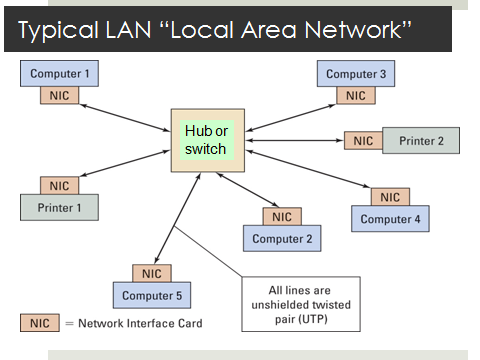Computer Block Diagram:
Define Computer
Computer is a Electronic Device Which is connected with Various components of input and output and processing devices and run by software called Operating System.
Block Diagram of Computer

Hardware is physical appearance of
the devices or tools, which we can touch & feel.
A typical computer consists of the
following parts of Hardware:
¨
CPU:
Central
Processing Unit and it acts as Control Unit and Controls All Components that
are connected to the Computer.
¨
Input Unit Contains Input Devices Like: Keyboard, Mouse
¨
Output Unit Contains Output Devices Like: Monitor, Printer
etc ..
¨
Memory Unit Contains: Ram & Rom
¨
Secondary Storage
Devices Like: Hard Disk, Pen drive (USB Storage Devices),CD-Rom, Dvd Rom, CD-Writer,
DVD-Writer, etc ..
Peripheral
Devices : All Connected Components On Computer Through Mother Board And its
Components.
CPU
— A central processing unit (CPU), also called a central processor or main processor.
— It is also called as the brain of the computer.
— This unit takes the input from the input devices and processes it according to the list of instructions called program.
— The basic function of the CPU is to control the operations of the computer and performs its data processing functions.
— The level 2 cache serves as the bridge for the process and memory performance gap.
— Its main goal is to provide the necessary stored information to the processor without any interruptions or any delays or wait-states.
 |
 |
Basically, the CPU is composed of parts:
— Arithmetic and Logical Unit(ALU)
— Control Unit(CU)
— Registers
Arithmetic and
Logical Unit(ALU)
— ALU
performs, the arithmetic operations on data by adding, subtracting, dividing,
multiplying and logical operations by using AND, OR, NOT and Exclusive-OR.
Control Unit(CU)
— The control unit (CU) is part of the CPU that directs the operation of the processor.
— It tells the computer's memory, arithmetic and logic unit and input and output devices how to respond to the instructions that have been sent to the processor.
— It directs the operation of the other units by providing timing and control signals. Most computer resources are managed by the CU.
Registers
— Registers are the small memory locations which provide a minimal storage to CPU.
— To perform arithmetic and logical operations.
— The
total no. of registers available in the CPU varies from processor to processor.
Memory Unit
— Memory unit is another component of the computer.
— It is a storage unit to hold the data.
— This is unit can be divided into 2 different categories, these are
— Primary or Main Memory. (RAM and ROM)
— Secondary or Auxiliary Memory (Hard disk)
è Primary memory
— It is the fastest memory in a digital computer system. This memory is primarily used to store the data and program temporarily during the execution of a program.
— It is further divided into two categories called:
— Random Access memory (RAM)
— Read Only Memory (ROM)
è Random Access Memory
— RAM is temporary storage device .
— This is the most important type of memory and the data is both written to and read through the secondary memory.
— It is volatile; means when the computer is turn off everything in RAM will be disappears.
— Basically, there are two types of RAMs.
— a)Static RAM
— b)Dynamic RAM
— Static RAMs are fast, so that cache memory is made-up of these devices. These are made up of Flip-Flops; an electronic device which stores a bit as voltage.
—  Dynamic RAM, is based on a technology called CMOS
transistors. The data can be stored as Charges on capacitors. These are used in
main memory.
Dynamic RAM, is based on a technology called CMOS
transistors. The data can be stored as Charges on capacitors. These are used in
main memory.
SD-RAM
è Read Only Memory:
— It is a part of primary memory and it is also called as non-volatile memory; means when the computer is switched-off, the data or program stored in ROM is not destroyed.
— This can be used only for reading of fetching of data from it.
— The main use of this is storing the BIOS.
— This Program is very important as it is used by the operating system at the time of starting or booting the system.
è Secondary Memory
— It is used to hold the data or program for future use.
— These are for long-term storage and are much larger in capacity than main memory but these are generally slower than main memory.
— Examples of auxiliary storage devices are hard disk ,memory card etc.
Computer Hardware consists of input & Output Devices:
Computer
Hardware consists of input Devices: Keyboard, Mouse are used to input to
computer.
Output
devices consists of the Monitor, Printer, Plotter etc, Are the output devices
are used to get output from computer.
Computer
Software:
Software
— The software is the set of instructions that makes the computer work. Software tells the hardware what to do and how to do.
— Computer software is divided into two broad categories:
— System Software
— Application Software
— System
Software:
— System software consists of programs that manage the hardware resources of a computer and perform required information processing tasks.
— The best example for system software is OS.
Application Software:
— Application software is used by user to perform specific task.
— Some examples of application softwares are word processor, web browser, media player, etc.



No comments:
Post a Comment